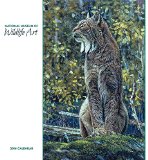New Britain Museum of American Art Jobs
 Since the days of ancient Greece, public art has existed as a major art form. Religious and social art was vigorously implemented by the Greeks to bolster public confidence in the empire. America experienced a similar phenomenon after the Great Depression when government-sponsored mural projects proliferated throughout major cities in order to reinvigorate public spirit. The unsanctioned street art of today also communicates socially relevant themes to the public, but does so in a way that often subverts and questions dominant political authority.
Since the days of ancient Greece, public art has existed as a major art form. Religious and social art was vigorously implemented by the Greeks to bolster public confidence in the empire. America experienced a similar phenomenon after the Great Depression when government-sponsored mural projects proliferated throughout major cities in order to reinvigorate public spirit. The unsanctioned street art of today also communicates socially relevant themes to the public, but does so in a way that often subverts and questions dominant political authority.
During the 1920s and 30s, members of the American artistic community revitalized the Italian Renaissance tradition of fresco painting that had also inspired their contemporaries in Mexico during the Mexican Mural Renaissance. Certain visionary U.S politicians including Franklin D. Roosevelt wanted to emulate the Mexican model that combined creativity and national values. Thomas Hart Benton (1889-1975), whose mural The Arts of Life in America (1932) can be found in the New Britain Museum of American Art collection of modernist paintings, worked under the Federal Art Project division of the Works Progress Administration, an organization that created over 5, 000 jobs for artists during the 1930s. For the first time since America’s founding, artists enjoyed generous government support. Poverty stricken cities, once devoid of life, were enlivened with colorful murals that depicted powerful, hard working Americans. Benton received a great deal of attention in 1930 when he created his own mural project. His Regionalist style, which focused on nostalgic and socially relevant subject matter, acted as a reminder of better times during a tumultuous moment in our nation’s history.
You might also like

|
National Museum Wildlife Art 2016 Calendar Book (Pomegranate (Cal))
|







 The Institute of American Indian Arts is a college focused on Native American art. It is situated in Santa Fe, New Mexico. It is congressionally chartered, and was created by an executive order of former American President John F. Kennedy in 1962. It offers two- and four-year undergraduate degrees in museum studies, creative writing, visual...
The Institute of American Indian Arts is a college focused on Native American art. It is situated in Santa Fe, New Mexico. It is congressionally chartered, and was created by an executive order of former American President John F. Kennedy in 1962. It offers two- and four-year undergraduate degrees in museum studies, creative writing, visual...
 Tribal art is an umbrella term used to describe visual arts and material culture of indigenous peoples. Also known as Ethnographic art, or, controversially, Primitive Art, tribal arts have historically been collected by Western anthropologists, private collectors, and museums, particularly ethnographic and natural history museums. The term...
Tribal art is an umbrella term used to describe visual arts and material culture of indigenous peoples. Also known as Ethnographic art, or, controversially, Primitive Art, tribal arts have historically been collected by Western anthropologists, private collectors, and museums, particularly ethnographic and natural history museums. The term...